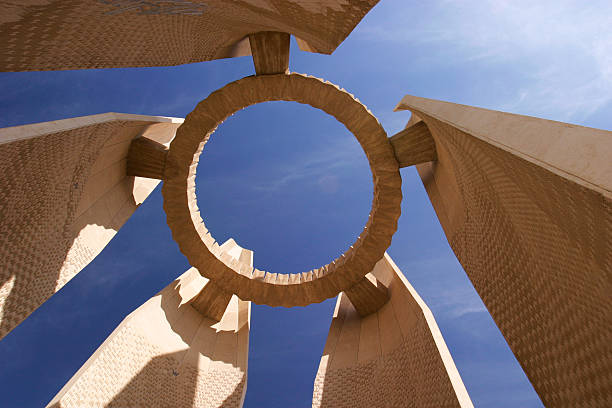
50 years ago, on 15th January 1971, Anwar Sadat, President of Egypt and Nikolai Podgorny, chairman of the presidium of the USSR Supreme Soviet officially launched the Aswan hydroelectric power station.
The hydro-electric power station with a capacity of 2.1 GWt doubled the output of electricity in Egypt. To this day it remains the largest power station in Egypt and generates approximately 5% of electricity.
Arab scholars proposed the construction of a dam below Aswan as far back as the 11th century, and in the 19th the British built the “Lower Aswan dam” and in the 1940-s and 1950-s, with the increase of demand for electricity the need for another power station came about. It was assumed that Great Britain and USA would have financed and built the project, but the Suez crisis and President Naser’s efforts to balance between the “east” and “west” led to an agreement on the design and financing of the project being signed with the USSR.
To this day the Aswan Dam remains the largest power station in Egypt and generates approximately 5% of electricity.
The USSR took the Aswan dam project seriously, design of the project was assigned to “Hydro-Project”, the Senior Engineer was Nikolay Malyshev. He proposed an original configuration for the installation – the Aswan dam fulfilled three functions: power station, water disposal and construction tunnels that provided significant advantages in time and resources.
An important aspect was the perception by the Soviet Union that the Aswan dam was not just a symbol of Afro-Soviet cooperation (namely Soviet-Arab), but also as the first sign of the gradual defeat of capitalism in Africa. When construction work started, Nikita Khrushchev declared that the Soviet Union would “drown capitalism” on the African continent, and Soviet assistance in building the Aswan dam was the start of this process.
Next to the dam stands a 75-meter monument in the shape of a lotus — a modern monument to Soviet-Arab friendship, with bas-relief by Ernst Neizvestny. It’s remarkable that the monument was not unveiled due to a worsening in relations between the two countries.
To this day the Aswan dam remains a symbol of Russo-Egyptian cooperation, and next to the dam stands a 75-meter monument in the shape of a lotus — a modern monument to Soviet-Arab friendship with bas-relief by Ernst Neizvestny. It’s remarkable that the monument was not unveiled due to a worsening in relations between the two countries.
In 2014, on the 50th anniversary of the damming of the Nile in Cairo a ceremony was held, attended by the Russian ambassador who passed on the greetings of President Putin.
Of course, it is undoubtedly important to remember past achievements, but new sense has to be created – and we’re not even referring to the El-Dabaa atomic power plant, referred to as “the largest joint project between Egypt and Russia since the period when the Aswan dam was built.”
Soviet scientists and designers completed a large number of energy projects in Africa — electric power stations, oil pipelines, research reactors, all of which are still being used and require modernization — and this can be achieved if Russian energy companies return to the market.
